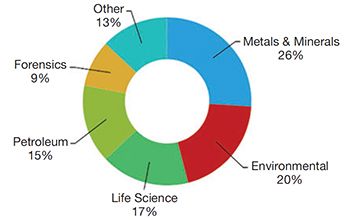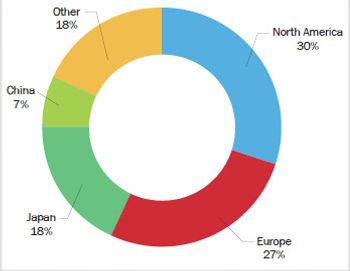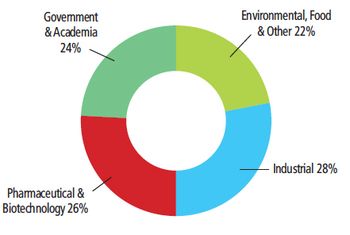
- Spectroscopy-10-01-2018
- Volume 33
- Issue 10
Market Profile: Handheld Spectroscopy
The advancements of battery and computing technologies have enabled analytical instruments to have smaller form factors that take them beyond portableand into the realm of being handheld.
The advancements of battery and computing technologies have enabled analytical instruments to have smaller form factors that take them beyond portableand into the realm of being handheld. Handheld x-ray fluorescence (XRF), near-infrared (NIR) and infrared (IR), and Raman spectroscopy are the key spectroscopy techniques available in portable and handheld formats that take analytical measurements beyond the laboratory and into the field.
Like other portable and handheld devices, these spectroscopy instruments will have less capabilities and performance than a laboratory instrument. Handheld instruments might be used for identification or qualitative analysis, or perhaps semi-quantitative measurements. They are typically tuned for specific applications to allow for an increased level of performance. Using these handheld devices is also simpler than using laboratory instruments; they usually have point-and-shoot or push-button operation, as well as touchscreen displays. Another key characteristic of handheld spectroscopy devices, aside from portability, is that they do not require sample pretreatment, allowing for direct measurements.
These handheld spectroscopy devices are now routinely used in many industries. Handheld XRF instruments are used in the metals industry for recycling and sorting scrap materials, and can identify elements from magnesium to uranium. Portable and handheld NIR and IR devices have high utility in food quality, fungus detection, plastics recycling, pharmaceuticals, and narcotics. Handheld Raman spectrometers are used for raw materials analysis, environmental, and forensics applications.
The total market for handheld spectroscopy accounted for approximately $150 million in North America in 2017, and is forecasted to increase 8–10% annually for the next few years, with XRF and Raman spectrometers representing about two thirds of the shipments. Industrial applications in the chemicals, plastics, and semiconductor sectors are expected to drive growth for 2018. Life science applications represent a significant share of the market, particularly for Raman and NIR and IR instruments. Government and academic laboratories account for about 17% of the market. The overall market leader for handheld spectroscopy is Thermo Fisher Scientific, with its flagship Niton XRF analyzers. Other leading manufacturers include Bruker, Hitachi, Olympus, and Rigaku.
Market size and growth estimates were adopted from TDA’s Industry Data, a database of technology market profiles and benchmarks, as well as the 2018 Instrument Industry Outlook (Midyear Update) report from independent market research firm Top-Down Analytics (TDA). For more information, contact Glenn Cudiamat, general manager, at (888) 953-5655 or
Articles in this issue
over 7 years ago
Spectroscopy October 2018 Issue PDFover 7 years ago
The 2018 Emerging Leader in Molecular Spectroscopy Awardover 7 years ago
Outliers, Part III: Dealing with OutliersNewsletter
Get essential updates on the latest spectroscopy technologies, regulatory standards, and best practices—subscribe today to Spectroscopy.




